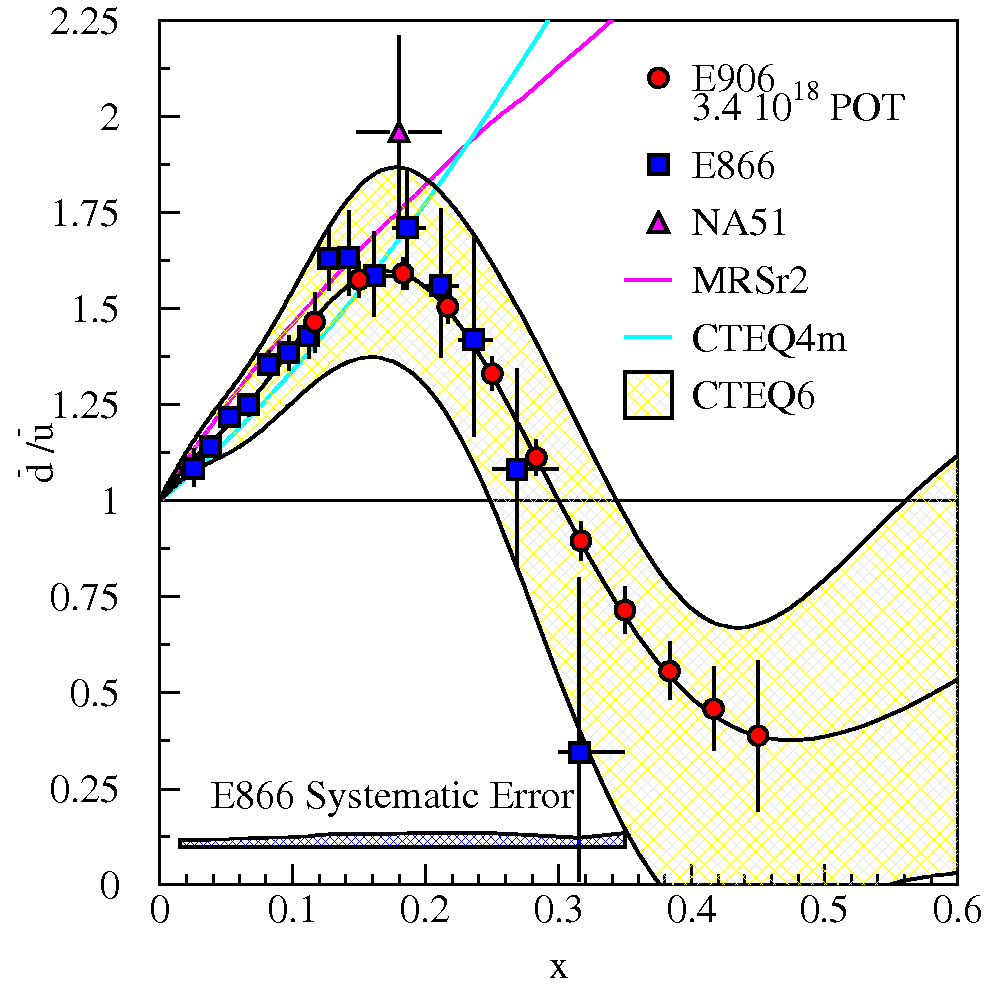Drell-Yan Measurements by Fermilab E-906/SeaQuest
 ...
a particle physics experiment which will utilize
Drell-Yan process to measure the contributions of antiquarks to the
structure of a nucleon and how this structure is
modified when this nucleon is embedded inside
an atomic nucleus.
...
a particle physics experiment which will utilize
Drell-Yan process to measure the contributions of antiquarks to the
structure of a nucleon and how this structure is
modified when this nucleon is embedded inside
an atomic nucleus.
..., the primary focus of this experiment was to measure the asymmetry of down and up antiquarks in the nucleon sea using Drell-Yan di-muons. The first Drell-Yan experiment was performed on E-866/NuSea at Fermilab with 800-GeV proton beam interactions with liquid hydrogen and deuterium targets. To extend these measurements to larger Bjorken-x, E-906/SeaQuest has been approved by Fermilab. It will use a 120 GeV proton beam extracted from the Fermilab Main Injector instead. In addition to extending the down to up antiquark measurements, the experiment will also examine the modifications to the antiquark structure of the proton from nuclear binding.

 The
Drell–Yan process occurs in high energy hadron–hadron scattering. It takes
place when a
The
Drell–Yan process occurs in high energy hadron–hadron scattering. It takes
place when a